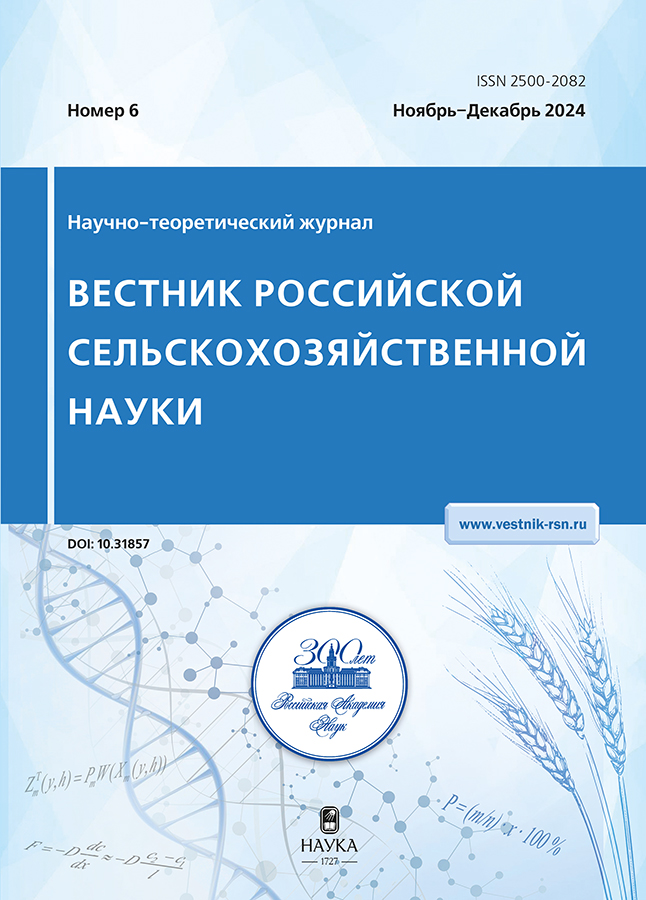Agrobiological Evaluation and Productivity of Arucola Varieties in the Republic of Dagestan
- 作者: Gadzhimustapaeva E.G.1, Kurkiev K.U.1,2
-
隶属关系:
- Dagestan Experimental Station – a branch of the N.I. Vavilov All-Russian Institute of Plant Genetic Resources
- Dagestan State University
- 期: 编号 6 (2024)
- 页面: 41-45
- 栏目: Crop Production and Selection
- URL: https://vietnamjournal.ru/2500-2082/article/view/659223
- DOI: https://doi.org/10.31857/S2500208224060104
- EDN: https://elibrary.ru/WUJKVC
- ID: 659223
如何引用文章
详细
The objective of the work is to optimize technological methods for cultivating arugula to obtain green mass in the Derbent district of the Republic of Dagestan. The study was conducted from 2021 to 2024 at the Dagestan Experimental station (the branch of All-Russian research institute). During the study of rare crops (arugula, Eruca sativa, wallrocket) were determined the seed and green mass productivity, commercial quality and seed plants height. To obtain green mass in the open ground of the Derbent district, the optimal sowing dates for arugula are from September to the first ten days of December, and the second ten days of February to May inclusive. In the greenhouse conditions sowing was carried out all year round. In the Southern Dagestan conditions were distinguished the following samples: by green mass per 1 m2 – Eruca sativa (3.09 kg); Eruca sativa Proito (2.99) and Olivett two-row (2.61); by the number of seeds per plot – Eruca sativa Proito (730 g), Arugula (470), Indau broadleaf (420) and wallrocket Olivette (410); by the weight of 1000 seeds – Eruca sativa Proito (2.78 pcs./g); Arugula (2.23) and wallrocket Olivette (2.17) with the maximum number of breeding valuable traits. Arugula samples may be recommended for using in breeding programs for the creating new higher-end varieties in the Derbent District and outside the Republic of Dagestan.
全文:
作者简介
E. Gadzhimustapaeva
Dagestan Experimental Station – a branch of the N.I. Vavilov All-Russian Institute of Plant Genetic Resources
编辑信件的主要联系方式.
Email: vir-evg-gajimus@yandex.ru
Grand PhD in Agricultural Sciences
俄罗斯联邦, VavilovoK. Kurkiev
Dagestan Experimental Station – a branch of the N.I. Vavilov All-Russian Institute of Plant Genetic Resources; Dagestan State University
Email: vir-evg-gajimus@yandex.ru
ORCID iD: 0000-0001-8232-6183
Grand PhD in Biological Sciences
俄罗斯联邦, Vavilovo; Makhachkala参考
- Alekseeva K.L., Ivanova M.I. Bolezni zelennyh ovoshchnyh kul’tur. M.: 2015. S. 121–129.
- Girenko M.M., Zvereva O.A. Zelennye ovoshchi: posobie dlya sadovodov-lyubitelej. M.: Niola-Press; izd. dom Yunion-pablik, 2007. S. 118–129.
- Dospekhov B.A. Metodika polevogo opyta s osnovami statisticheskoj obrabotki rezul’tatov issledovanij. M.: Agropromizdat, 1985. 416 s.
- Ludilov V.A., Ivanova M.I. Redkie i malorasprostranennye ovoshchnye kul’tury (biologiya, vyrashchivanie, semenovodstvo). M.: FGNU «Rosinformagrotekh», 2009. 196 s.
- Paponov A.N. Rukkola – delikatesnoe salatnoe rastenie // Kartofel’ i ovoshchi. 2004. № 2. S. 15.
- Pivovarov V.F. Ovoshchi Rossii. Eruka posevnaya ili indau. M.: 2006. S. 155–157.
- Rabinovich A.M., Borisov V.A. Celebnye ovoshchnye i pryanoaromaticheskie rasteniya Rossii. M.: Arnebiya, 2008. 512 s.
- Matthew H., Jenny J., Gordon R. The germination of perennial wall rocket (Diplotaxis tenuifolia (L.) DC.) and Annual garden roket (Eruca sativa Mill.) under controlled temperatures. J. Plant Breeding fnd Seed Science, Versita, Warsaw, 2012. P. 15–28.
- Parsons J.M. Australian weed control handbook. Inkata Prees, Melbourne, 1995. P. 338–341.
- Pignone D. Present status of rocket genetic resources and conservation activities. In: Padulosi S. and Pignone D. (eds.), Rocket: a Mediterranean crop for the world. Report of workshop, 13–14 December 1996, Legnaro (Padova) Italy. IPGRI Institute. Rome, Italy, 1997. P. 2–12.
补充文件









